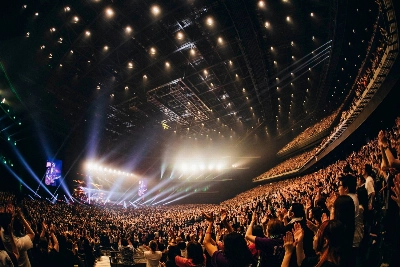The Japanese film industry has made movies featuring the Ainu, indigenous people who now live mostly in Hokkaido, but with Japanese actors in the Ainu roles. In his second feature “Ainu Mosir” (2020), Hokkaido-born Takeshi Fukunaga used a nonprofessional Ainu cast to explore the issue of identity within the setting of an Ainu village that caters to tourists, while depicting the struggles of the characters to preserve and pass on customs to the next generation.
In his documentary “Ainu Puri,” Fukunaga takes a different approach by focusing on one Ainu family whose young patriarch, Shigeki Amanai, is trying to live a traditionally Ainu life in Shiranuka, Hokkaido.
For both films, Fukunaga did the slow, difficult work of winning trust and cooperation so that his actors and subjects, as well as the wider Ainu community, would be comfortable with his camera and trust that he would represent them fairly and sympathetically.
In “Ainu Puri” (puri means “ways” in the Ainu language), he goes beyond the recording of ceremonies and rituals — which taken alone and out of context might look exoticizing and exploitative — and gets into the minds and lives of Amanai and his family and friends. Fukunaga shows various facets of his subjects, from their sense of humor to pride in their heritage, despite the deep-dyed prejudices of the larger society. His film is not only conventionally instructive but also heartwarming, funny and, to certain sensitivities, disturbing.
We first meet Amanai, together with two Ainu friends, on a nighttime quest to catch salmon — once a staple of the Ainu diet — in a swift-running stream. Instead of poles and lines, they use harpoons called marek that are made with zip ties. (“We’re modern Ainu,” one jokingly explains.)
Marek fishing, we later learn, was once threatened with extinction as its practitioners grew old and died, but is now being revived by Amanai and other younger Ainu. However, forms must be filled out and filed before every marek fishing expedition. “I wish I didn’t have to do this — (marek fishing) should be our right,” Amanai complains. “But I suppose it can’t be helped.”
We then see Amanai hunting deer with a high-powered rifle, making a graphic on-camera kill. He ritualistically gives thanks in the Ainu language and explains that animals are gifts from the gods.
He also takes his young son Motoki hunting, but when he shoots a lone fawn, the boy looks upset. When Fukunaga later asks Motoki privately if he wants to be a hunter like his dad, he squirms and answers in the negative. Generations ago, we imagine, the question wouldn’t have been raised.
Beginning in the Meiji Era (1868-1912), those earlier generations were forbidden to practice their culture and speak their language by a government bent on assimilating them into a Japanese mainstream that nationalists even now insist is completely homogenous. So when we see Amanai and his friends prepare for and take part in Ainu ceremonies, gray-haired elders are conspicuously absent.
In a post-screening Q&A at the Foreign Correspondents Club of Japan, Amanai told me via video chat that Ainu now in their 50s and 60s “were not able to carry on the traditions for the next generation. So it’s up to our generation to do that.”
“Ainu Puri,” which portrays for outsiders the richness and vitality of modern Ainu culture, zip ties and all, should make his task easier.
| Rating | |
|---|---|
| Run Time | 82 mins. |
| Language | Ainu, Japanese |
| Opens | Dec. 14 |


















With your current subscription plan you can comment on stories. However, before writing your first comment, please create a display name in the Profile section of your subscriber account page.